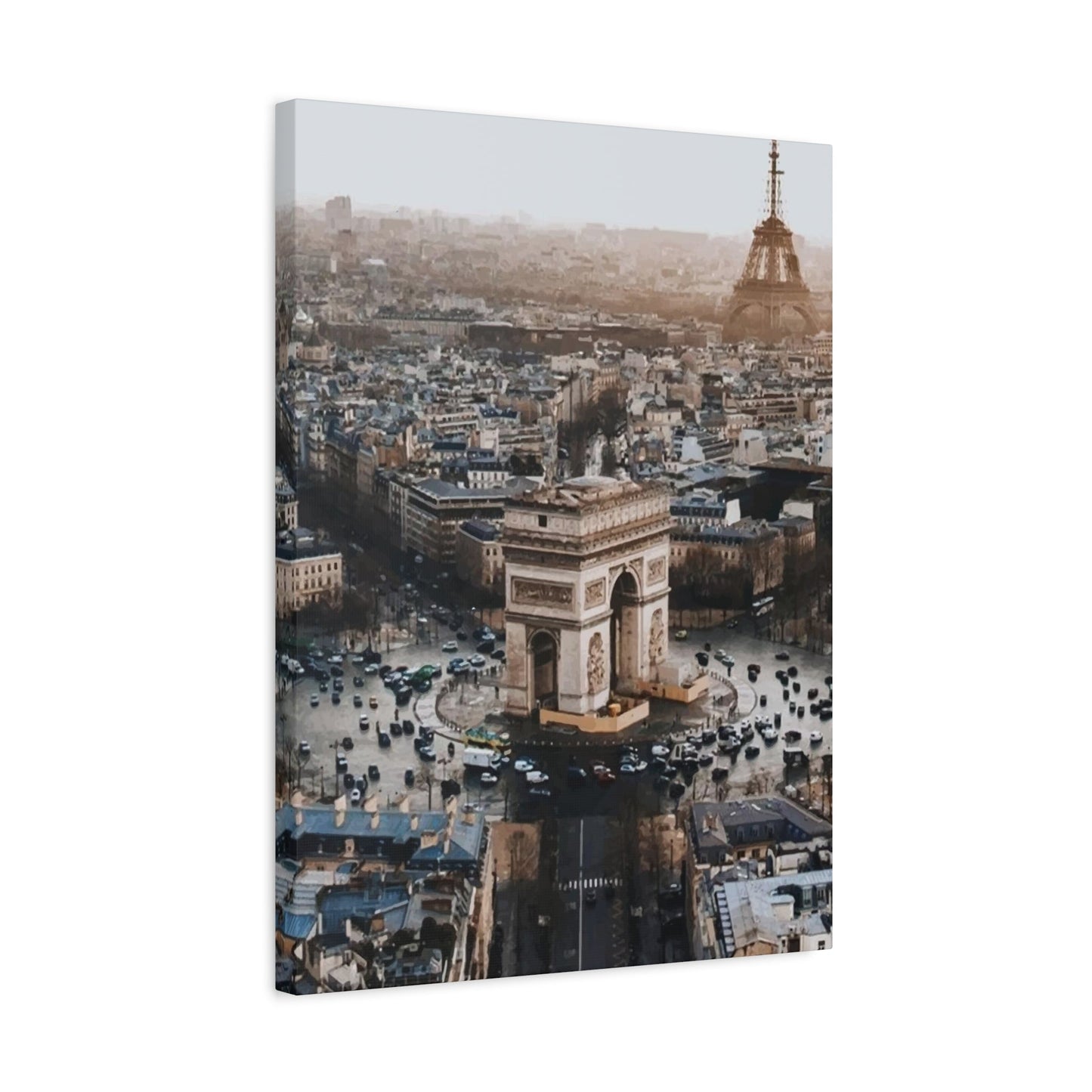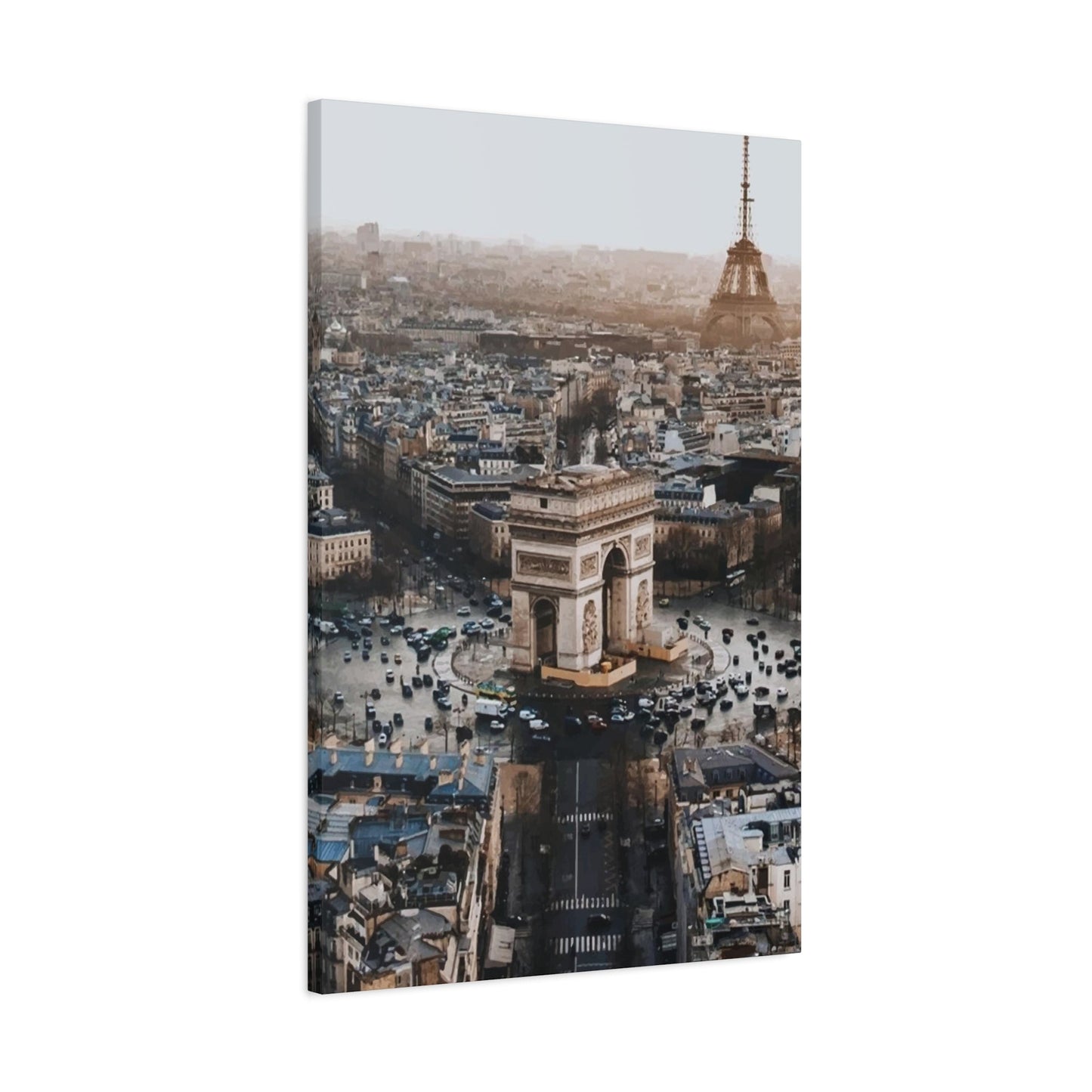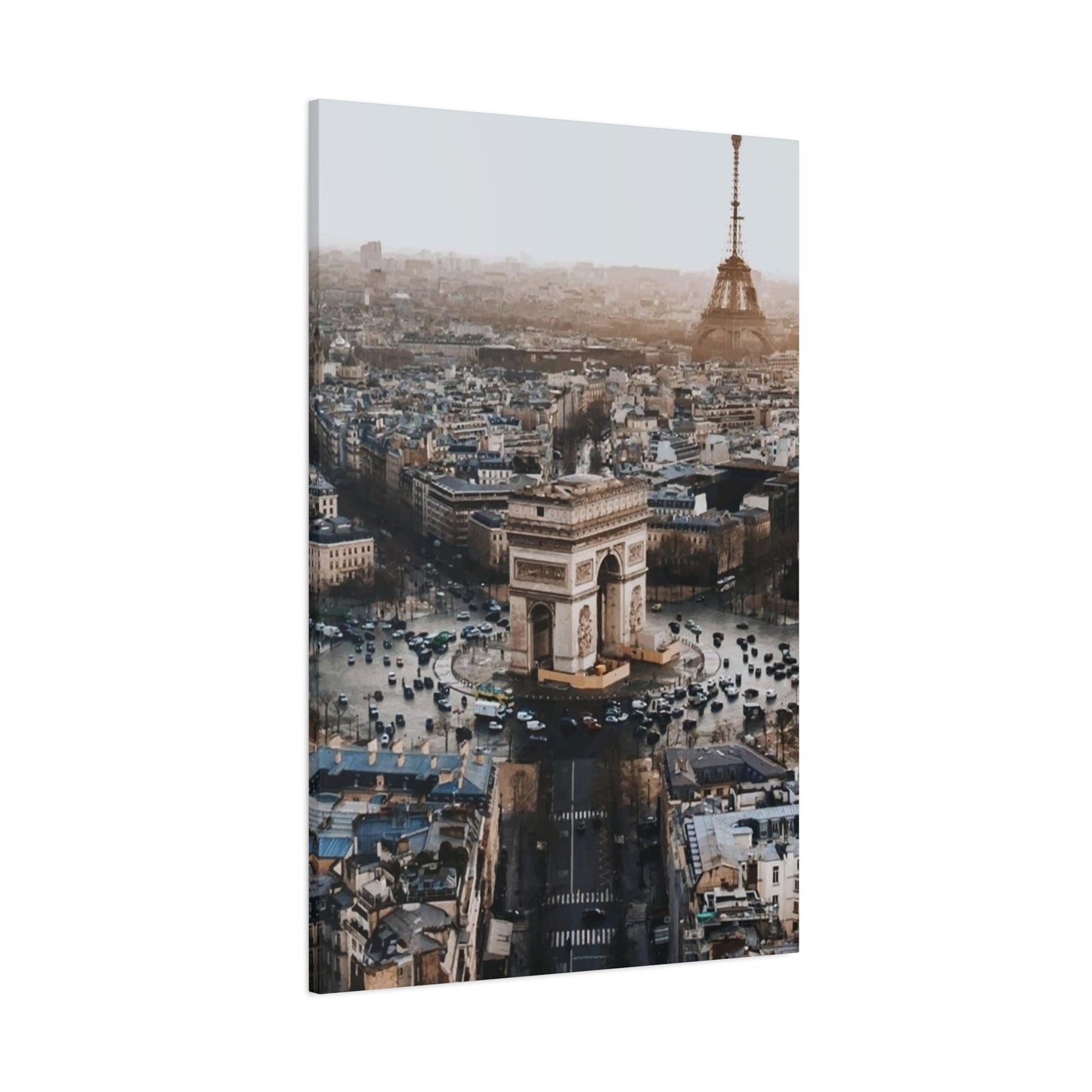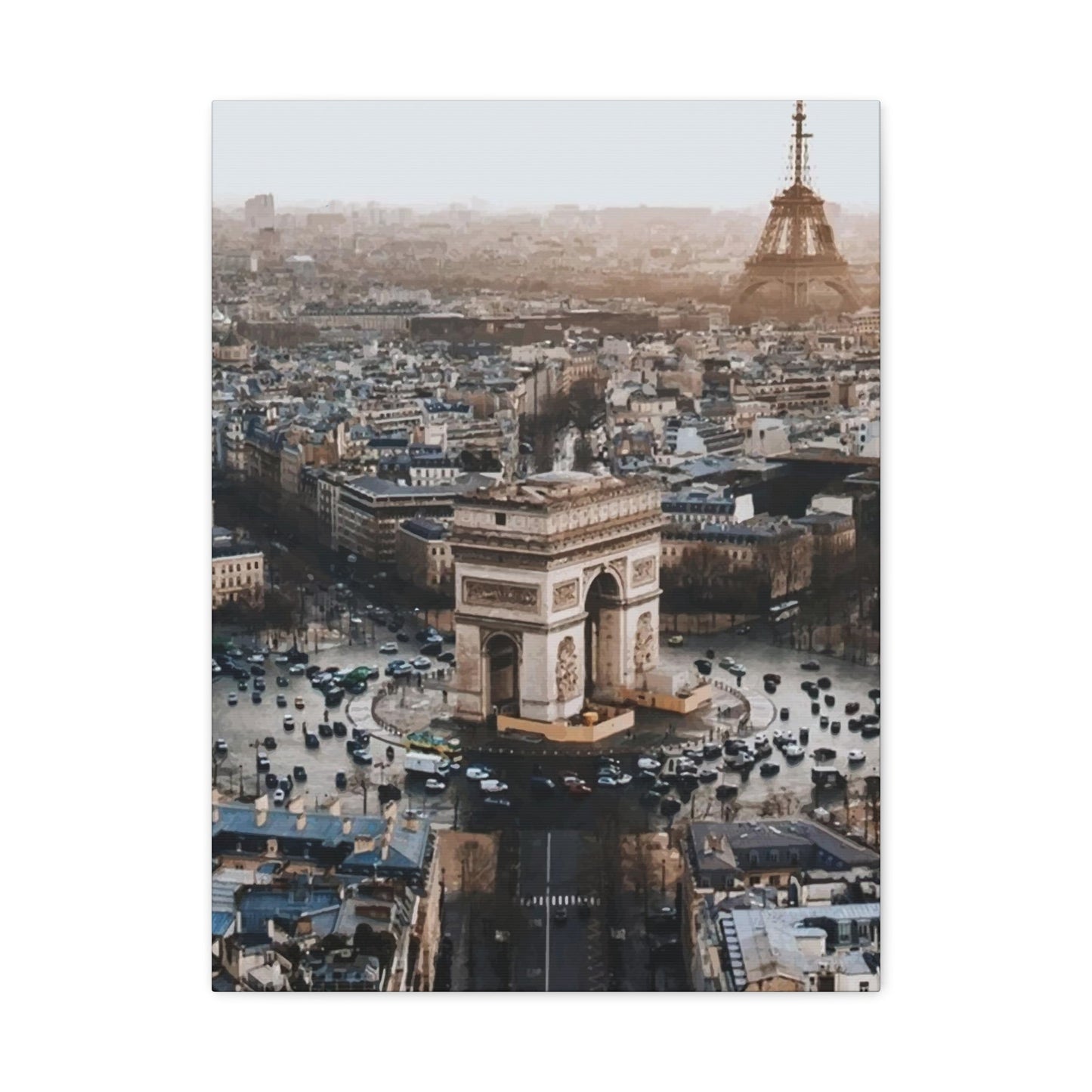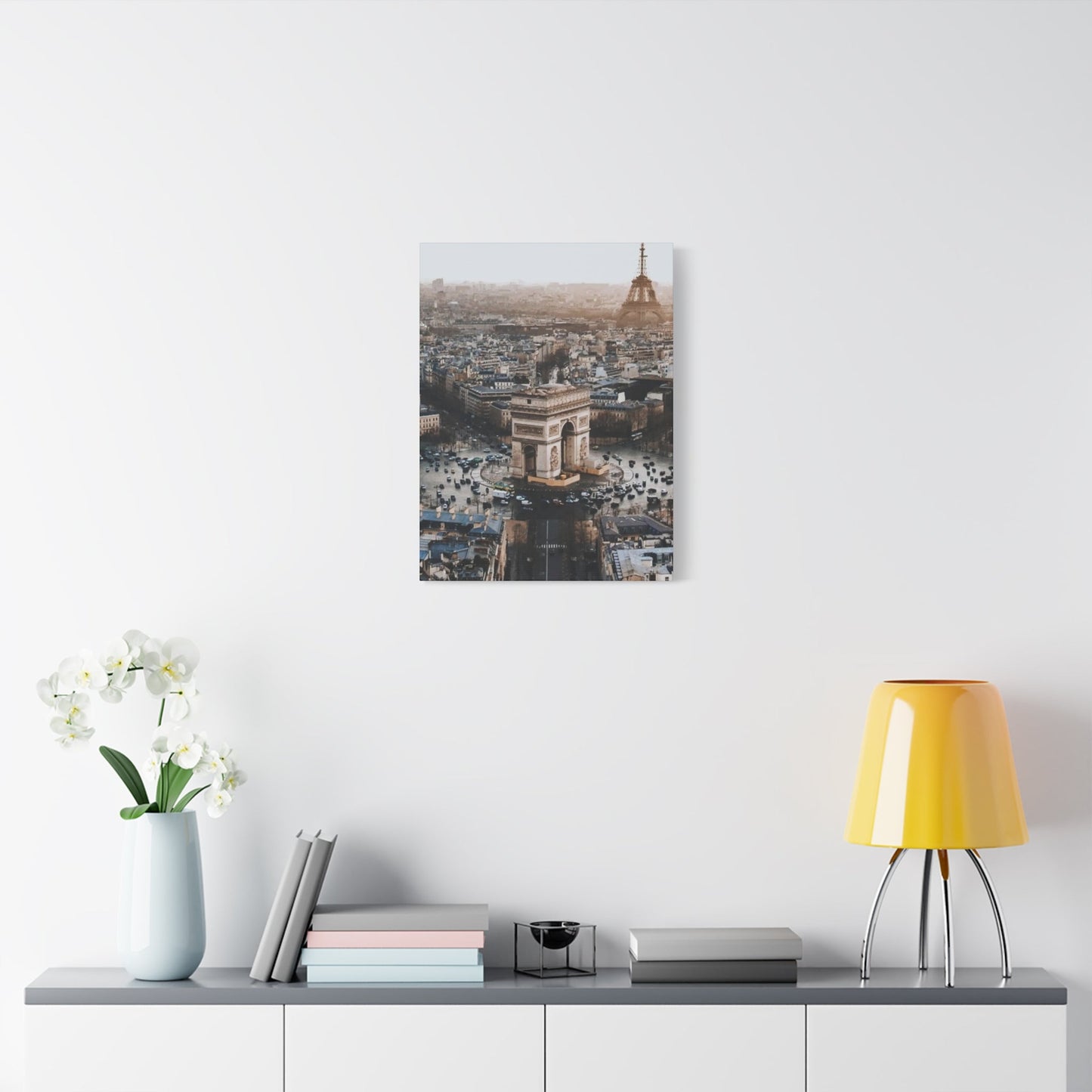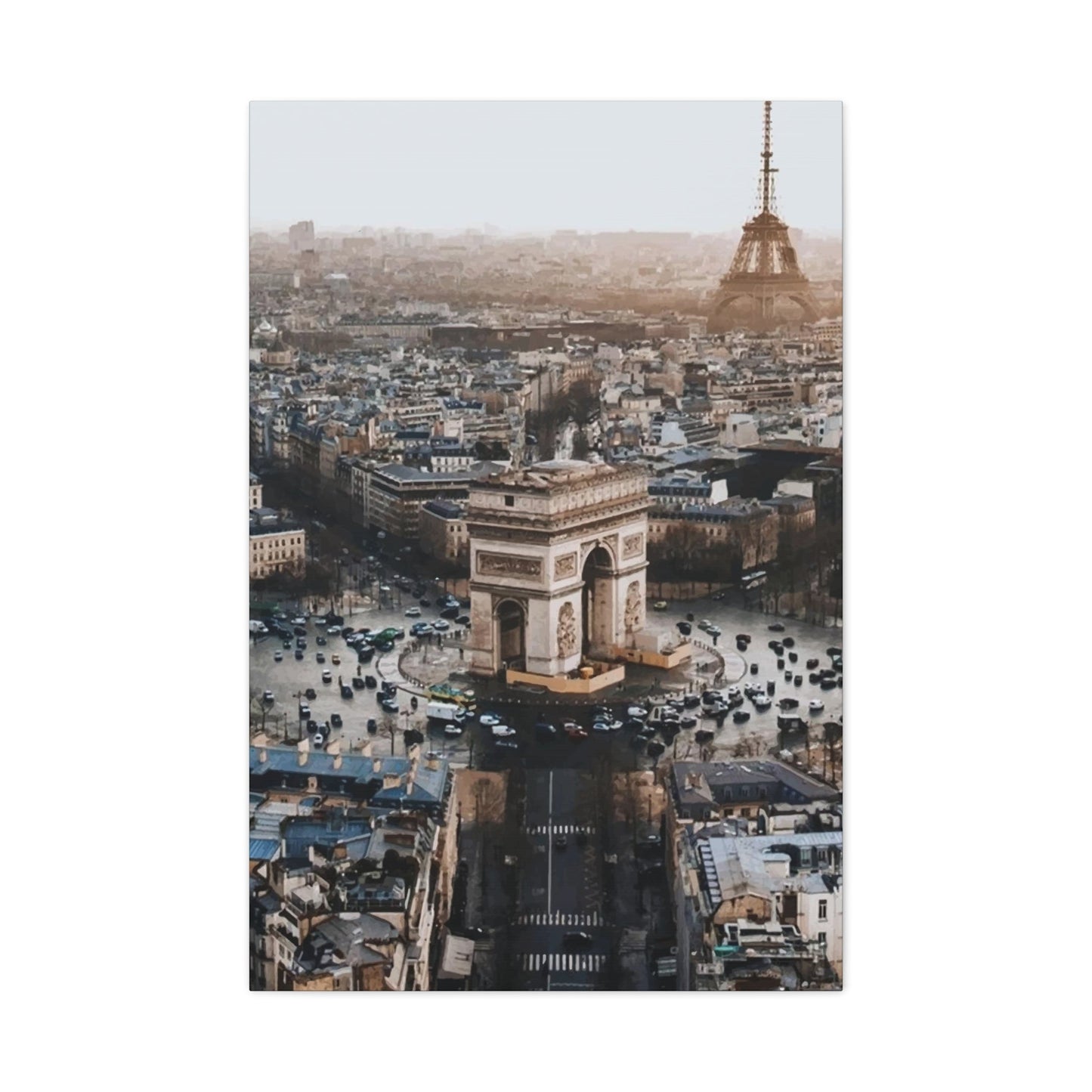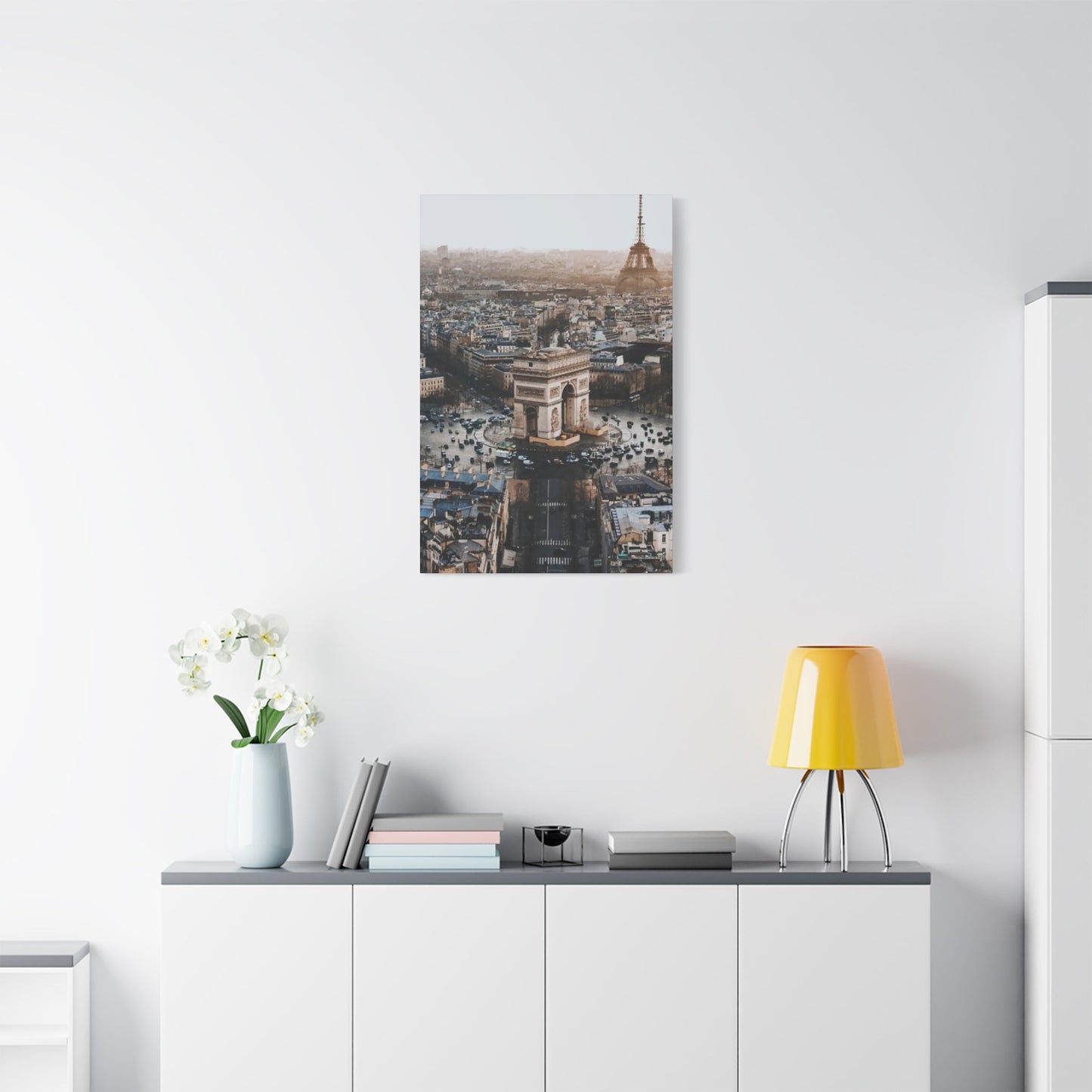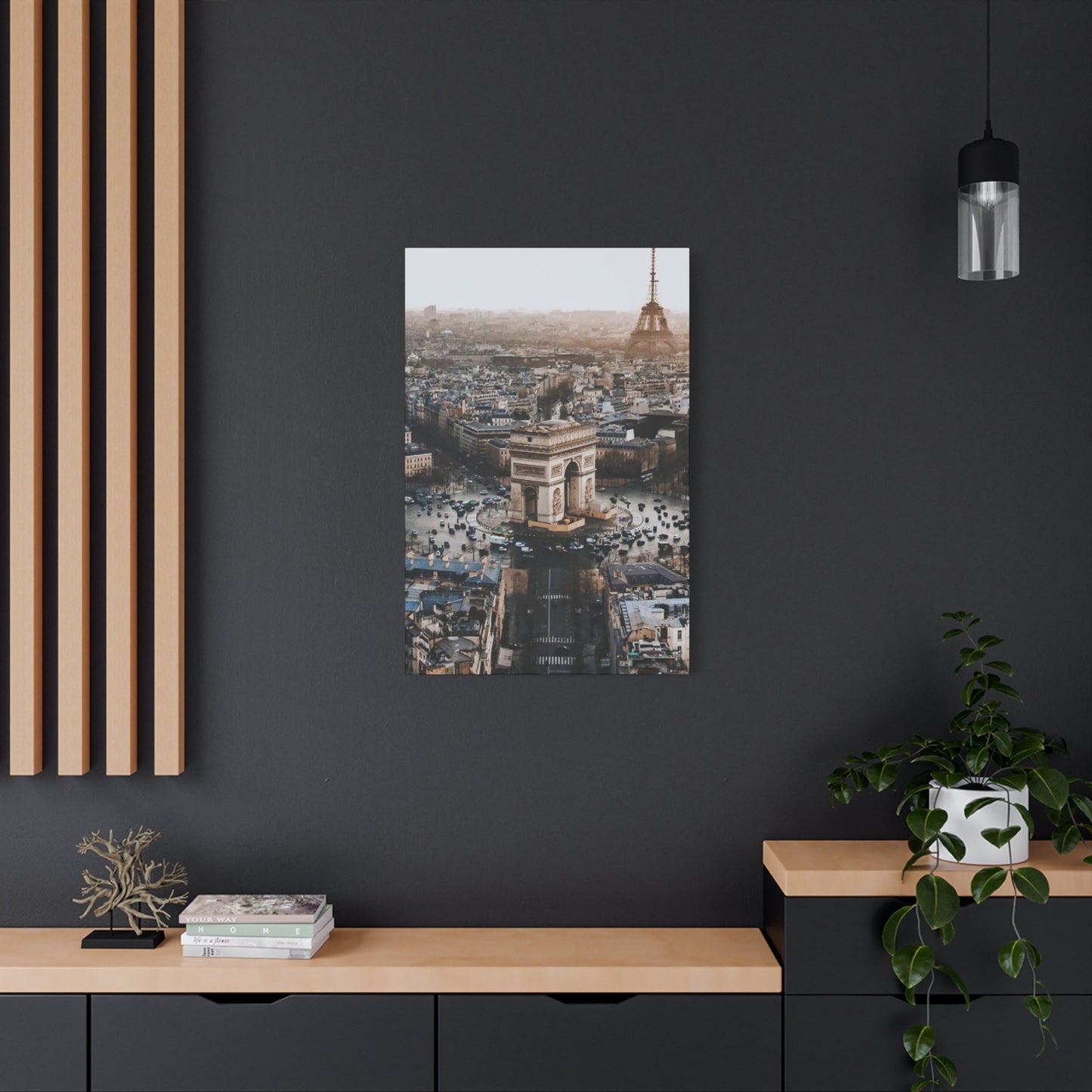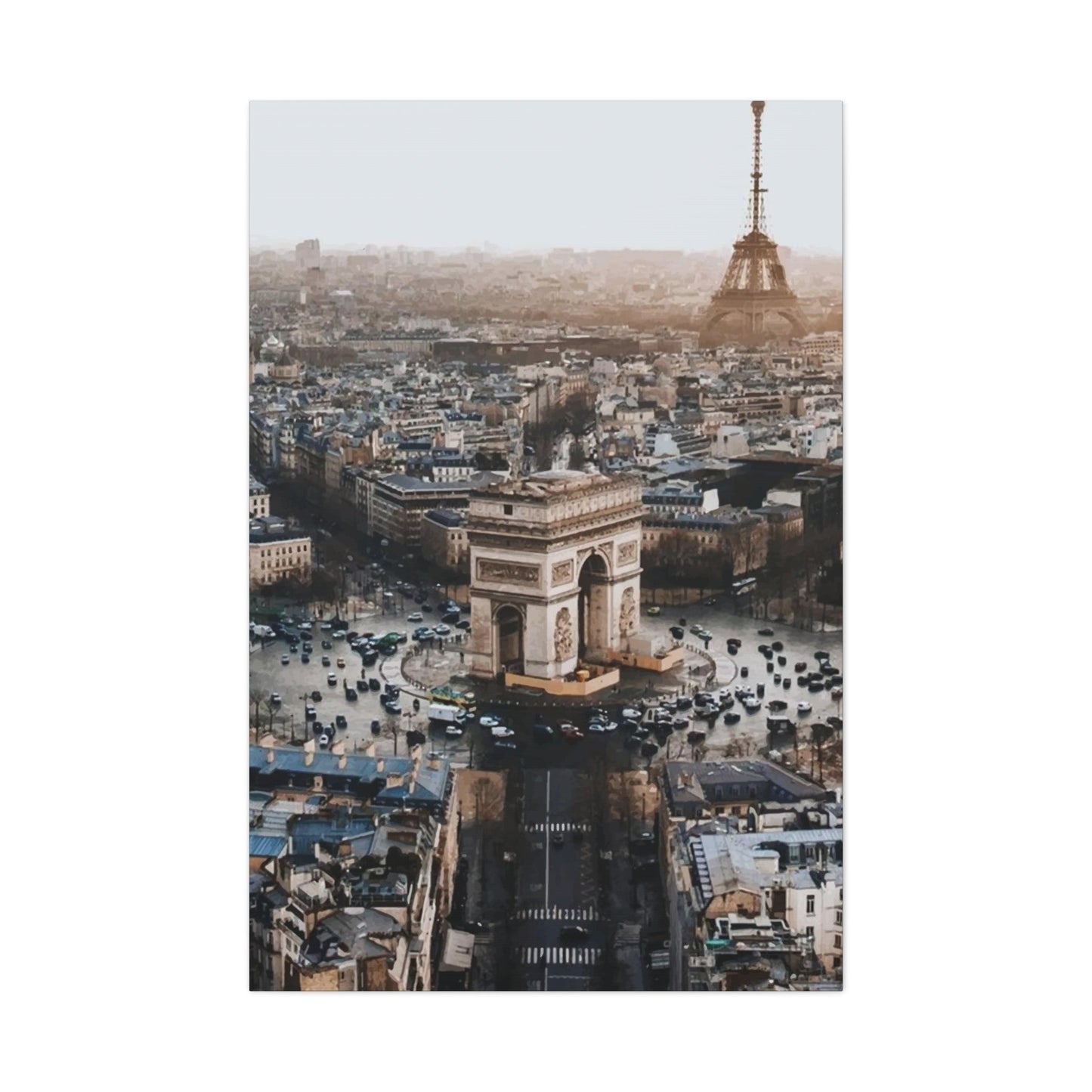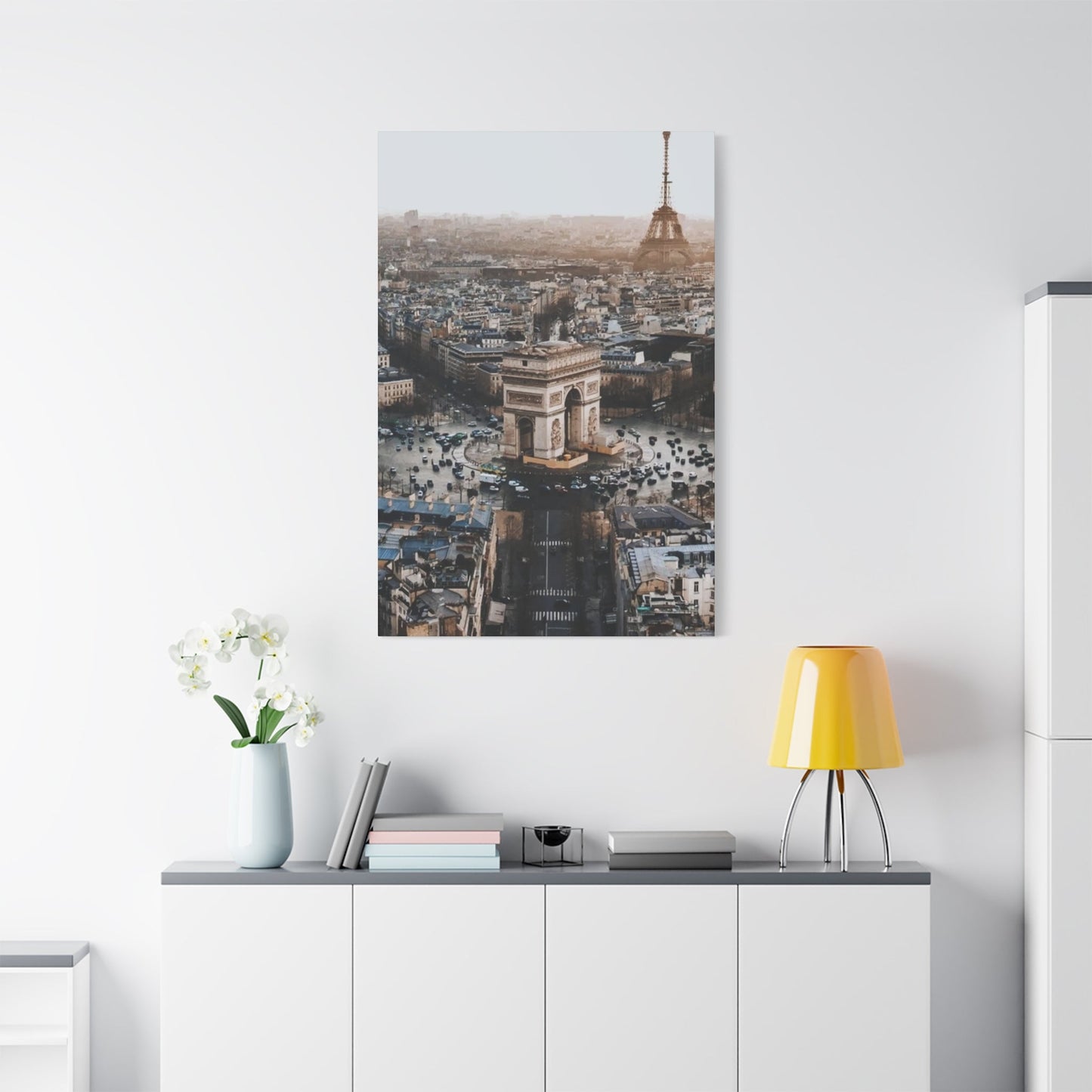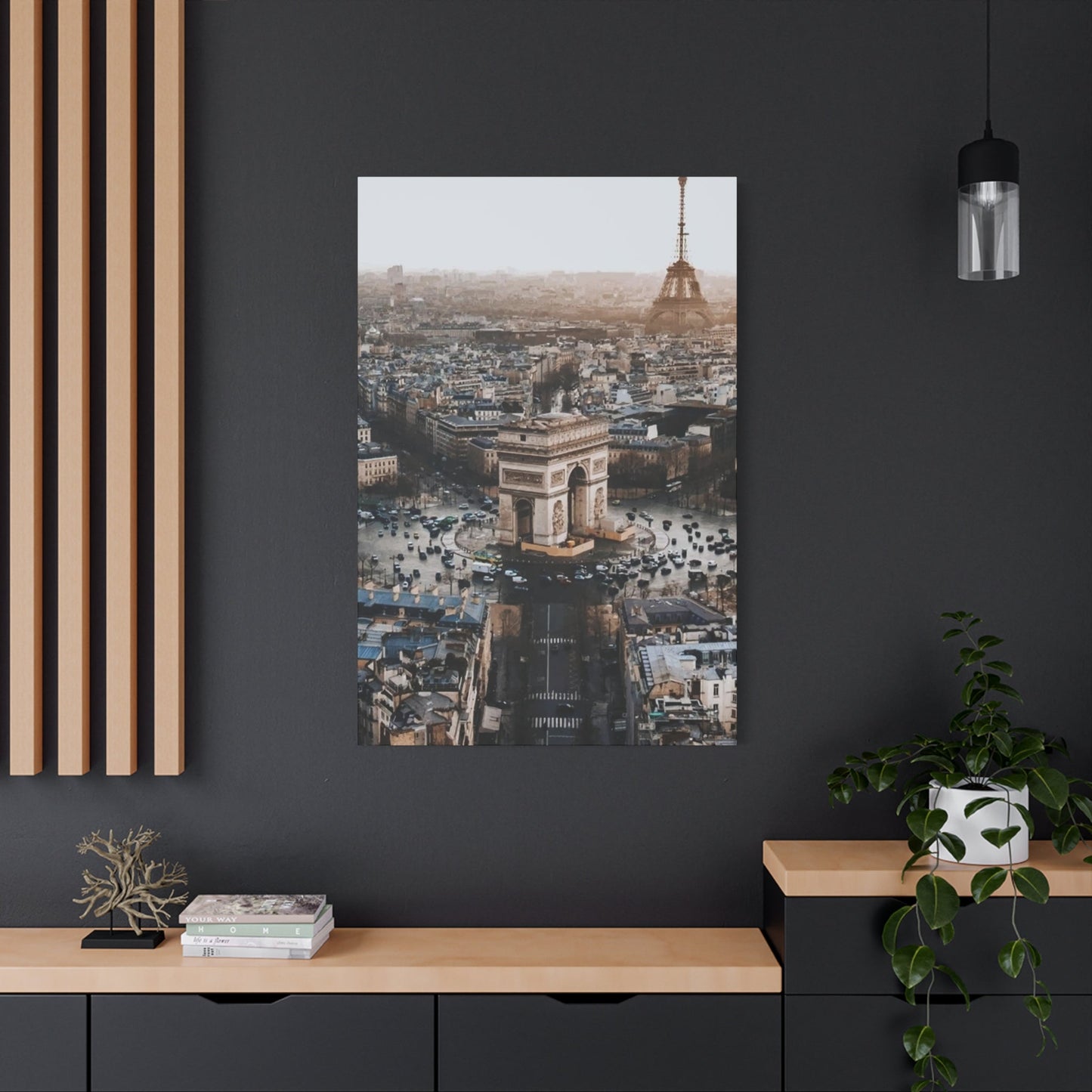Captivating Paris Wall Art: Creating French Elegance in Every Room
Paris, the City of Light, has captivated hearts and minds for centuries with its timeless beauty, romantic atmosphere, and artistic heritage. The allure of Parisian culture extends far beyond the city's borders, inspiring countless homeowners to bring a touch of French sophistication into their living environments. Through carefully selected Paris wall art, you can transform any room into a sophisticated sanctuary that celebrates the elegance and charm of this iconic city.
The magic of Parisian-themed artwork lies in its ability to evoke emotions and transport viewers to cobblestone streets, charming cafés, and breathtaking architectural marvels. Whether you're drawn to the romantic silhouette of the Eiffel Tower against a dusky sky, the bustling energy of street markets, or the serene beauty of the Seine River, Paris wall art offers endless possibilities for creating a personalized and inspiring living environment.
This comprehensive exploration will delve into the diverse world of Parisian-themed artwork, examining various styles, subjects, and approaches that can enhance your home's aesthetic appeal. From classic representations to contemporary interpretations, we'll discover how different artistic styles can complement various decorating schemes while maintaining the quintessential French charm that makes Paris so beloved worldwide.
The selection of appropriate Paris wall art goes beyond simply choosing beautiful images; it involves understanding how different pieces can work together to create a cohesive narrative that reflects your personal style and appreciation for French culture. By considering factors such as color palettes, artistic techniques, and thematic elements, you can curate a collection that not only beautifies your living environment but also serves as a daily source of inspiration and joy.
Enchanting Eiffel Tower Imagery for Romantic Ambiance
The Eiffel Tower stands as perhaps the most recognizable symbol of Paris, making it a natural focal point for any collection of Parisian artwork. Romantic Eiffel Tower prints capture the tower's majestic presence in ways that evoke the deep emotional connection many people feel toward this architectural marvel. These pieces often feature the tower silhouetted against dramatic skies, bathed in golden sunset light, or twinkling with its famous hourly illumination display.
Artists approach Eiffel Tower imagery from numerous perspectives, creating works that range from photorealistic representations to impressionistic interpretations that emphasize mood over precise detail. Some prints focus on the tower's intricate iron lattice work, celebrating the engineering marvel that Gustave Eiffel created in 1889. Others take a more atmospheric approach, showing the tower emerging from morning mist or standing proud against stormy skies, emphasizing its role as a beacon of hope and beauty in the urban landscape.
The romantic appeal of Eiffel Tower prints often stems from their ability to evoke memories of special moments or dreams of future visits to Paris. Many couples choose these pieces for bedrooms or intimate dining areas, where the tower's presence can serve as a reminder of shared adventures or romantic aspirations. The tower's elegant silhouette works particularly well in monochromatic schemes, where black and white treatments can emphasize the structure's graceful curves and dramatic height.
Color variations in Eiffel Tower artwork offer different emotional resonances. Sepia-toned prints evoke vintage postcards and nostalgic memories of Paris's golden age, while vibrant sunset scenes create warmth and energy. Cool blue twilight scenes can provide a calming presence, perfect for bedrooms or meditation rooms where tranquility is desired. The choice of color treatment can significantly impact how the artwork integrates with existing decor and influences the overall mood of the room.
Contemporary artists have also reimagined the Eiffel Tower through various artistic lenses, creating abstract interpretations that maintain the tower's essential character while offering fresh perspectives. These might include cubist-inspired geometric representations, watercolor washes that blur the tower's edges into dreamy impressions, or mixed-media pieces that incorporate collage elements like vintage maps or French text. Such innovative approaches allow homeowners to enjoy the iconic symbol while adding modern artistic sensibilities to their collections.
The placement of Eiffel Tower prints requires careful consideration of scale and proportion. Large-format pieces can serve as dramatic focal points above sofas or beds, while smaller prints work well in groupings or as part of gallery walls. The tower's vertical nature makes it particularly suitable for narrow wall areas or rooms with high ceilings, where its upward thrust can help draw the eye upward and create a sense of expanded vertical dimension.
When selecting Eiffel Tower artwork, consider how the piece will interact with lighting in your room. Prints that feature the tower at different times of day can be enhanced by strategic lighting placement, with warm accent lights emphasizing sunset scenes or cool lighting complementing twilight images. The interplay between artificial lighting and the artwork's lighting effects can create dynamic visual experiences that change throughout the day.
Charming Café Culture Through Bistro Scene Artwork
The café culture of Paris represents one of the city's most enduring and beloved aspects, embodying a lifestyle that values leisure, conversation, and the simple pleasure of watching the world go by. Paris street cafés and bistro scenes captured in wall art bring this quintessentially French experience into homes, creating atmospheres that encourage relaxation and social connection. These pieces often depict charming outdoor terraces with their characteristic wicker chairs, small round tables, and colorful awnings that provide shelter from both sun and rain.
Bistro scene artwork captures the energy and intimacy of Parisian café life through various artistic approaches. Some pieces focus on the architectural elements that define these establishments, showcasing the elegant facades with their large windows, decorative ironwork, and hand-painted signage that announces the café's name and specialties. Others emphasize the human element, depicting patrons engaged in animated conversations, solitary readers enjoying their morning coffee, or couples sharing intimate moments over wine and pastries.
The color palettes in café scene artwork often reflect the warm, inviting atmosphere of these establishments. Rich burgundies and deep blues from awnings and exterior paint create sophisticated backgrounds, while the golden glow of interior lighting adds warmth and invitation. Many artists incorporate the verdant greens of potted plants and window boxes that many cafés use to create welcoming entrance areas, adding natural elements that soften the urban environment.
Seasonal variations in café scene artwork offer different moods and experiences. Spring and summer scenes might show terraces filled with diners enjoying al fresco meals under sunny skies, with flowering plants adding color and vitality to the compositions. Autumn scenes could feature cafés as cozy refuges from crisp weather, with warm interior lighting beckoning passersby. Winter depictions might show intimate bistros with fogged windows, suggesting warmth and comfort within while snow falls gently outside.
The appeal of bistro scene artwork extends beyond mere decoration to encompass lifestyle aspiration. These pieces can inspire homeowners to create their own café-like environments, whether through dedicated breakfast nooks, coffee stations, or outdoor dining areas that echo the leisurely pace and social focus of Parisian café culture. The artwork serves as both aesthetic enhancement and lifestyle reminder, encouraging viewers to slow down and savor life's simple pleasures.
Technical approaches to café scene artwork vary widely, from precise architectural renderings that document specific establishments to loose, impressionistic treatments that capture mood and atmosphere rather than exact details. Watercolor techniques work particularly well for café scenes, as the medium's natural flow and transparency can suggest the ephemeral quality of changing light and weather that makes each café experience unique.
Photography-based café scene prints offer a different appeal, providing documentary evidence of real Parisian establishments while maintaining artistic composition and aesthetic appeal. These pieces might capture candid moments of café life, architectural details that reveal the establishments' histories, or atmospheric shots that emphasize mood over narrative content. The choice between painted and photographic approaches depends on the desired level of realism and the overall aesthetic goals of the room's design.
Timeless Black and White Paris Cityscape Compositions
Black and white Paris cityscape art possesses a timeless quality that transcends fleeting design trends, offering sophisticated elegance that complements virtually any decorating style. This monochromatic approach to Parisian imagery emphasizes composition, contrast, and architectural detail over color relationships, creating pieces that focus attention on the city's fundamental beauty and structural harmony. The absence of color allows viewers to appreciate the interplay of light and shadow, the rhythm of architectural elements, and the graphic quality of urban landscapes.
The tradition of black and white photography in Paris dates back to the early days of the medium, when pioneers like Eugène Atget documented the city's transformation during the late 19th and early 20th centuries. This historical connection gives contemporary black and white Paris art a sense of continuity with the past, linking modern homes to decades of artistic documentation and interpretation. The monochromatic palette evokes the elegance of vintage postcards, classic films, and iconic photography that helped establish Paris's romantic reputation worldwide.
Architectural elements take on particular prominence in black and white cityscape art, where the absence of color forces viewers to focus on form, proportion, and detail. The ornate facades of Haussmanian buildings reveal their intricate stonework and decorative elements more clearly when rendered in grayscale, while the geometric patterns of wrought-iron balconies create striking graphic elements against lighter backgrounds. The contrast between old and new architectural styles becomes more apparent, highlighting the city's evolution while maintaining visual coherence.
Street-level perspectives in black and white cityscape art can capture the energy and movement of urban life through dynamic compositions and dramatic lighting effects. Morning light filtering through narrow streets creates bold patterns of light and shadow, while evening scenes might emphasize the glow of streetlamps and shop windows against darker surroundings. Rain-soaked streets become mirrors that reflect building facades and create additional layers of visual interest through doubling and distortion.
The emotional impact of black and white Paris cityscape art often depends on the photographer's or artist's choice of moment and perspective. Quiet early morning scenes might emphasize solitude and contemplation, while busy afternoon shots could celebrate the vibrant energy of urban life. Weather conditions play crucial roles in establishing mood, with foggy mornings creating mysterious, romantic atmospheres and bright sunny days producing clean, optimistic impressions.
Technical considerations in black and white cityscape art include the management of contrast levels, the preservation of detail in both highlights and shadows, and the creation of visual paths that guide viewers' eyes through complex compositions. Master practitioners understand how to use the full range of gray tones to create depth and dimension, preventing flat, lifeless images while maintaining the graphic impact that makes monochromatic art so appealing.
Contemporary digital techniques have expanded the possibilities for black and white cityscape art, allowing artists to manipulate contrast, texture, and tonal relationships with unprecedented precision. Some artists combine multiple exposures to capture greater dynamic range, while others apply selective adjustments that emphasize particular architectural elements or atmospheric conditions. These technical capabilities enable the creation of black and white images that surpass what was possible with traditional darkroom techniques.
The versatility of black and white Paris cityscape art makes it particularly valuable for homeowners seeking artwork that will remain relevant through changing decorating phases. These pieces work equally well with minimalist modern furnishings, traditional antiques, or eclectic mixed styles. The neutral palette ensures compatibility with any color scheme, while the sophisticated urban subject matter adds cultural depth and visual interest to residential environments.
Delicate Watercolor Paris Prints for Gentle Elegance
Soft watercolor Paris prints represent a gentler approach to Parisian imagery, emphasizing emotion and atmosphere over precise documentation. The watercolor medium's inherent fluidity and transparency create dreamy, impressionistic renderings that capture the essence of Paris through suggestion rather than explicit detail. These pieces often feature bleeding colors, soft edges, and luminous washes that evoke the changing light and weather conditions that give Paris its ever-changing character.
The appeal of watercolor Paris prints lies in their ability to create peaceful, contemplative atmospheres that encourage relaxation and daydreaming. The medium's natural unpredictability results in unique textures and color combinations that cannot be precisely replicated, giving each piece an individual character that mass-produced prints cannot match. This handmade quality resonates with viewers who appreciate craftsmanship and artistic authenticity in their home decorations.
Color relationships in watercolor Paris prints often emphasize harmonious palettes that reflect the city's natural beauty and architectural coherence. Warm golden tones might dominate scenes of Parisian boulevards bathed in afternoon sunlight, while cool blues and purples could capture the tranquil beauty of the Seine at twilight. The medium's transparency allows colors to interact and blend in ways that create subtle gradations and unexpected harmonies that would be difficult to achieve with opaque media.
Architectural subjects in watercolor Paris prints benefit from the medium's ability to suggest rather than define precise forms. The soft edges created by watercolor washes can make ancient stone buildings appear to emerge from morning mist, while the irregular patterns created by paint flow can suggest the weathered textures of centuries-old facades. This interpretive approach allows viewers to fill in details with their own imagination, creating more personal connections with the artwork.
Landscape elements in watercolor Paris prints, such as trees lining the Champs-Élysées or gardens in hidden courtyards, come alive through the medium's ability to capture natural growth patterns and seasonal changes. Spring blossoms can be suggested through delicate pink washes, while autumn foliage might appear as warm golden spatters across blue-gray sky backgrounds. The organic quality of watercolor marks naturally complements the depiction of living elements in urban scenes.
Weather effects receive particularly effective treatment in watercolor Paris prints, where the medium's fluid nature perfectly captures the ephemeral quality of changing atmospheric conditions. Rain can be suggested through vertical wash patterns, while fog might appear as subtle gray veils that partially obscure familiar landmarks. These atmospheric effects add emotional depth to the imagery, suggesting specific moods and times of year that can enhance the artwork's connection to viewers' memories and experiences.
The scale and format of watercolor Paris prints can vary significantly based on the artist's approach and the intended display context. Large-format pieces might feature broad washes that create impressive atmospheric effects, while smaller works could focus on intimate details like window boxes or café table arrangements. Series of related watercolor prints can work together to create narrative sequences or explore different aspects of a single subject through varying approaches.
Contemporary watercolor artists working with Parisian subjects often combine traditional techniques with modern approaches, incorporating collage elements, experimental mark-making tools, or digital enhancements that expand the medium's expressive possibilities. These hybrid approaches maintain watercolor's essential character while offering fresh perspectives that appeal to collectors seeking innovative interpretations of classic subjects.
Nostalgic Vintage Paris Poster Aesthetics
Vintage Paris poster aesthetics draw inspiration from the golden age of French graphic design, particularly the Belle Époque period when artists like Toulouse-Lautrec and Jules Chéret revolutionized commercial art through their innovative poster designs. Modern interpretations of this aesthetic combine historical design elements with contemporary sensibilities, creating artwork that celebrates Paris's rich cultural heritage while remaining relevant to current decorating trends.
The visual language of vintage Paris posters typically includes bold typography, simplified color palettes, and stylized illustrations that communicate information quickly and memorably. These design principles translate beautifully to wall art, where they create pieces that function both as decoration and as celebrations of graphic design history. The poster format's emphasis on clear communication and visual impact makes these pieces particularly effective in rooms where they need to compete for attention with other decorative elements.
Color schemes in vintage Paris poster aesthetics often reflect the printing limitations and artistic preferences of early 20th century commercial design. Rich burgundies, deep blues, warm ochres, and cream backgrounds create sophisticated palettes that work well with both traditional and contemporary furnishing styles. The simplified color relationships typical of vintage poster design create visual clarity that makes these pieces easy to integrate into existing decorating schemes.
Typography plays a crucial role in vintage Paris poster aesthetics, with hand-lettered or decorative typefaces adding authentic period character to contemporary reproductions. French phrases and place names rendered in elegant script fonts or bold sans-serif letters contribute both visual interest and cultural authenticity. The integration of text and image in these pieces creates layered compositions that reward close examination while maintaining overall visual coherence.
Subject matter in vintage Paris poster aesthetics often focuses on cultural attractions, transportation systems, and lifestyle activities that defined Parisian life during the early modern period. Artistic interpretations of the Métro system, famous department stores, theatrical productions, and leisure activities provide glimpses into daily life during Paris's most celebrated artistic periods. These historical references create connections between past and present that can enrich viewers' understanding and appreciation of French culture.
The commercial origins of vintage poster design influence the compositions and visual strategies used in contemporary interpretations. Clean layouts, strategic use of white (or cream) distance, and hierarchical organization of visual elements create pieces that are both aesthetically pleasing and easy to "read" in the quick glances typical of modern living. This clarity of communication makes vintage poster aesthetics particularly suitable for high-traffic areas where artwork needs to make immediate visual impact.
Reproduction techniques for vintage Paris poster aesthetics range from faithful recreations of historical designs to contemporary interpretations that maintain period character while updating content and imagery. Digital printing allows for faithful color reproduction and precise registration of multiple color layers, while traditional screen printing techniques can replicate the slightly imperfect registration and texture characteristics that give authentic vintage posters their distinctive character.
The collectibility aspect of vintage poster aesthetics appeals to homeowners who appreciate the historical significance and artistic merit of graphic design. Series of related pieces can create impressive displays that document the evolution of particular themes or celebrate the work of influential designers. This collecting approach adds intellectual depth to decorating choices while creating opportunities for ongoing expansion and refinement of the collection.
Contemporary Abstract Interpretations of the Seine River
Abstract interpretations of the Seine River represent some of the most innovative and emotionally resonant approaches to Parisian wall art, transforming the river's flowing character into compositions that emphasize movement, color, and emotional response over literal representation. These pieces capture the Seine's essential qualities through artistic interpretation rather than documentary description, creating artwork that can evoke the river's presence without necessarily depicting its specific appearance.
The Seine's role as Paris's central waterway and historical lifeline provides rich symbolic material for abstract interpretation. Artists might represent the river's flow through dynamic brushstrokes or geometric patterns that suggest movement and continuity. The water's reflective qualities can inspire compositions that play with color interactions and light effects, creating pieces that change appearance under different viewing conditions much like the river itself transforms throughout the day.
Color relationships in abstract Seine interpretations often draw from the river's natural palette while expanding beyond literal representation. Blue-gray foundations might anchor compositions that include the golden reflections of sunset light, the silver shimmer of overcast skies, or the deep purple shadows cast by riverside buildings. These color explorations can create artwork that captures the river's emotional impact rather than its specific visual appearance.
Movement and flow become central compositional elements in abstract Seine interpretations, with artists using various techniques to suggest the water's constant motion. Curved lines might represent the river's meanders through the city, while layered transparent shapes could suggest the complex interactions between flowing water and reflected light. These movement studies can create dynamic artwork that brings energy and vitality to residential environments.
Seasonal variations in abstract Seine interpretations offer opportunities to explore how changing weather and light conditions affect the river's character throughout the year. Spring compositions might emphasize fresh greens and soft blues that suggest renewal and growth, while winter pieces could explore the stark beauty of bare trees reflected in dark water. These seasonal approaches allow for rotating displays that can refresh room atmospheres as natural conditions change.
The interaction between natural and urban elements along the Seine provides material for abstract compositions that explore the relationship between organic and geometric forms. Bridge structures might inspire angular compositional elements that contrast with flowing water representations, while the irregular patterns of tree reflections could soften geometric building forms. These urban-natural tensions create visually interesting compositions that reflect the complex character of river cities.
Contemporary materials and techniques expand the possibilities for abstract Seine interpretations beyond traditional painting and drawing media. Mixed-media approaches might incorporate collage elements like map fragments or photographic details, while digital techniques can create precise color gradations and complex layering effects. These technical innovations allow artists to create unique interpretations that would be impossible with traditional materials alone.
The emotional resonance of abstract Seine interpretations often stems from their ability to suggest universal experiences of flow, reflection, and continuity that transcend specific geographical references. Viewers can appreciate these pieces for their formal qualities while also connecting them to personal experiences of rivers, water, and urban landscapes. This dual accessibility makes abstract interpretations particularly valuable for diverse household members with different aesthetic preferences.
Atmospheric Paris Night Lights Canvas Prints
Paris night lights canvas prints capture one of the city's most magical qualities: its transformation from daytime elegance to nighttime enchantment through strategic illumination of landmarks, streets, and architectural features. These pieces celebrate Paris's nickname as the "City of Light" by focusing on how artificial lighting creates drama, romance, and visual excitement after dark. The contrast between illuminated elements and dark surroundings creates compositions with strong visual impact and emotional appeal.
The technical challenges of night photography and painting require artists to master the representation of multiple light sources, complex shadow patterns, and the subtle color variations that different types of artificial lighting produce. Street lamps create warm golden pools of light, while building facade lighting might produce cooler white or blue tones. Neon signs and illuminated shop windows add colorful accents that can serve as compositional focal points or atmospheric details that enliven night scenes.
Landmark illumination receives special attention in Paris night lights artwork, with iconic structures like the Eiffel Tower, Notre-Dame, and the Arc de Triomphe serving as dramatic focal points that anchor nighttime compositions. The Eiffel Tower's hourly sparkling display creates particularly spectacular subject matter, with thousands of twinkling lights creating a jewel-like effect against dark skies. These landmark lighting displays represent uniquely Parisian experiences that cannot be replicated elsewhere.
Street-level night scenes offer more intimate perspectives on Paris's nighttime character, showing how lighting transforms everyday urban environments into theatrical settings. Café windows glowing with warm interior light create inviting beacons along darkened streets, while the reflections of illuminated signs in wet pavement add layers of visual complexity. These street-level perspectives can help viewers imagine themselves walking through Paris after dark.
The seasonal qualities of Paris night lighting change throughout the year, offering artists opportunities to explore different moods and atmospheric conditions. Summer night scenes might feature outdoor dining areas illuminated by string lights and lanterns, creating festive, celebratory atmospheres. Winter scenes could emphasize the contrast between warm interior lighting and cold exterior conditions, suggesting comfort and refuge within the urban environment.
Color temperature variations in artificial lighting create rich opportunities for artistic interpretation in night scene artwork. The warm tones of traditional incandescent street lighting contrast beautifully with the cooler tones of modern LED installations, while colored lighting used for special events or holiday celebrations can transform familiar landmarks into fantastical subjects. These color relationships can create artwork with strong emotional impact and visual drama.
Technical approaches to night lighting artwork range from realistic documentation that faithfully reproduces the appearance of specific locations to interpretive treatments that emphasize mood and atmosphere over literal accuracy. Long exposure photographic techniques can create light trails from moving vehicles, while painting approaches might use loose brushwork to suggest the shimmering quality of reflected lights. These different techniques offer various aesthetic options for different decorating contexts.
Canvas printing technology particularly suits night lighting artwork because it can reproduce the subtle gradations and rich color saturation that make these images effective. The texture of canvas surfaces can add tactile interest to night scenes while maintaining the smooth gradations necessary for realistic light effects. Large format canvas prints can create immersive experiences that make viewers feel transported to Parisian streets after dark.
Artistic Heritage of Montmartre and the Artists' Quarter
Montmartre and the historic Artists' Quarter represent one of Paris's most bohemian and culturally significant neighborhoods, making them compelling subjects for wall art that celebrates creativity, artistic tradition, and the romantic image of the struggling artist pursuing their vision in picturesque surroundings. This elevated district's winding streets, historic windmills, and stunning city views have inspired countless artists, from Impressionist masters to contemporary creators seeking to capture its unique atmosphere.
The architectural character of Montmartre provides rich material for artistic interpretation, with its narrow cobblestone streets, ancient staircases, and buildings that seem to tumble down the hillside in organic arrangements that contrast sharply with the geometric precision of central Paris's Haussmanian boulevards. The famous Sacré-Cœur Basilica crowns the district with its distinctive white domes, creating a dramatic focal point that appears in countless artistic interpretations.
Place du Tertre, the heart of Montmartre's artist community, continues to function as an outdoor studio and gallery where contemporary artists create portraits and landscapes for tourists while maintaining a tradition that stretches back over a century. Artwork depicting this famous square captures both its historical significance and its ongoing role in Paris's cultural life, showing how artistic traditions adapt and survive in changing urban environments.
The windmills of Montmartre, including the famous Moulin Rouge and Moulin de la Galette, represent unique architectural elements that have become symbols of the district's character and history. These structures, once functional grain mills, evolved into entertainment venues and artist gathering places that played crucial roles in the development of modern art movements. Contemporary artwork featuring these landmarks connects current viewers to this rich artistic heritage.
Color palettes associated with Montmartre artwork often reflect the district's bohemian character through rich, warm tones that suggest creativity and passion. The golden stone of older buildings, the lush greens of small parks and private gardens, and the bright colors of artist supplies and café awnings create vibrant compositions that celebrate life and artistic expression. These color relationships can bring energy and optimism to residential environments.
The human element plays a particularly important role in Montmartre-themed artwork, with depictions of artists at work, café patrons engaged in animated discussions, and street musicians entertaining passersby. These human stories add narrative depth to the artwork while connecting viewers to the district's continuing function as a creative community. The presence of people in these scenes makes them more relatable and emotionally engaging.
Historical references in Montmartre artwork might include subtle nods to famous artists who lived and worked in the district, such as Toulouse-Lautrec's cabaret scenes, Renoir's dance scenes, or Picasso's Blue Period works. While avoiding direct copying, contemporary artists can reference these influences through compositional choices, color relationships, or subject matter that acknowledges the district's role in art history.
Seasonal variations in Montmartre artwork offer different perspectives on the district's character throughout the year. Spring scenes might emphasize the flowering trees and outdoor café life that make the area particularly appealing during warmer months, while winter views could focus on the cozy interiors of bistros and artist studios where creativity continues regardless of weather conditions.
Botanical Beauty: Floral Paris Boulevard Scenes
Floral Paris boulevard scenes celebrate the city's commitment to urban beautification through strategic placement of flowering plants, trees, and gardens that soften the urban environment while adding seasonal color and natural vitality to architectural settings. These botanical elements provide crucial counterpoints to stone and metal surfaces, creating more liveable urban environments that inspire residents and visitors alike. Wall art featuring floral Paris themes brings this natural beauty indoors while maintaining connections to the outdoor urban experience.
The tree-lined boulevards that characterize much of Paris provide spectacular seasonal displays that change dramatically throughout the year, offering artists rich material for exploring how natural cycles interact with permanent urban structures. Spring brings fresh green foliage and flowering chestnuts, plane trees, and lindens that create green canopies over busy streets. Summer deepens these greens while providing shade and cooling effects that make outdoor activities more pleasant.
Autumn transforms Parisian boulevards into golden galleries where falling leaves create natural carpets and dramatic color contrasts against gray stone buildings and blue-gray skies. Winter reveals the elegant branch structures of deciduous trees while highlighting the role of evergreen plantings in maintaining year-round interest in urban landscapes. These seasonal transformations provide endless inspiration for artists seeking to capture the dynamic relationship between natural and built environments.
Window box gardens represent a particularly Parisian approach to urban floriculture, with residents creating miniature landscapes on balconies and window ledges that add color and personality to building facades. These small-scale gardens often feature seasonal flowers, herbs, and trailing plants that create vertical green elements on otherwise hard architectural surfaces. Artwork featuring window box gardens can bring intimate, human-scale details into rooms while celebrating the individual creativity that makes cities liveable.
Public gardens and parks within Paris provide more extensive botanical displays that can serve as subjects for larger, more complex compositions. The Luxembourg Gardens, Tuileries, and numerous smaller parks throughout the city feature formal plantings, seasonal flower displays, and mature trees that create park-like settings within the urban fabric. These green environments offer respite from city energy while providing beautiful subjects for artwork that emphasizes peace and natural beauty.
Café terraces often incorporate potted plants and seasonal flowers that create welcoming entrance areas while extending the indoor dining experience into outdoor settings. These commercial landscaping efforts add color and life to street-level business districts while providing subjects for artwork that celebrates the integration of commerce, social life, and natural beauty. The combination of architectural elements with botanical details creates visually rich compositions.
Flower markets, particularly the famous market on Île de la Cité, represent concentrated displays of botanical beauty that celebrate both natural abundance and human cultivation skills. These markets provide spectacular color displays and create temporary landscapes that change daily based on seasonal availability and individual vendor choices. Artwork inspired by flower markets can bring the excitement and sensory richness of these environments into residential settings.
Color relationships in floral Paris artwork often emphasize the contrast between natural and architectural elements, with bright flower colors creating focal points against neutral stone backgrounds. Seasonal color progressions can be used to create series of related pieces that document the changing character of particular locations throughout the year. These color studies can provide decorating flexibility while maintaining thematic coherence.
Sophisticated Minimalist Paris Silhouettes
Minimalist Paris silhouettes represent a refined approach to Parisian wall art that emphasizes essential forms and iconic profiles while eliminating extraneous detail that might compete for attention or date the artwork. This reductive aesthetic celebrates the power of simple, elegant forms to communicate complex ideas and emotions, making these pieces particularly suitable for contemporary decorating schemes that value clean lines and uncluttered visual environments.
The graphic quality of silhouette art allows for strong visual impact through high contrast relationships between dark forms and light backgrounds, creating pieces that can function effectively even when viewed from distances or in peripheral vision. This visual strength makes minimalist silhouettes particularly valuable in rooms where artwork must compete with other visual elements or where viewing conditions vary throughout the day based on natural lighting changes.
Landmark silhouettes, particularly the Eiffel Tower's distinctive outline, create instantly recognizable references to Paris while maintaining the abstract quality that characterizes minimalist art. The tower's elegant proportions and structural logic make it an ideal subject for reductive treatment, where the removal of surface detail emphasizes the beauty of the underlying form. Other landmarks like Arc de Triomphe or Sacré-Cœur can receive similar treatment while maintaining their essential character.
Urban skylines provide opportunities for more complex silhouette compositions that capture the rhythm and variety of Parisian architecture through simplified profiles that emphasize building heights, roofline variations, and the overall character of different neighborhoods. These skyline studies can create sophisticated artwork that suggests urban complexity while maintaining visual simplicity. The horizontal format typical of skyline compositions makes these pieces particularly suitable for placement above furniture or in locations where width is more available than height.
Human figures in minimalist Paris silhouettes can suggest activities and lifestyle elements associated with Parisian culture without requiring detailed representation of specific individuals. Walking figures might suggest the pleasure of urban exploration, while seated figures could evoke café culture or park relaxation. These human elements add narrative interest to minimalist compositions while maintaining the anonymous, universal quality that makes minimalist art broadly appealing.
Color choices in minimalist Paris silhouettes significantly impact their emotional resonance and decorating compatibility. Classic black silhouettes against white backgrounds create maximum contrast and timeless appeal, while colored silhouettes might use sophisticated single hues that coordinate with existing color schemes. Reversed silhouettes, with light forms against dark backgrounds, can create different moods while maintaining the essential simplicity of the minimalist approach.
Scale considerations become particularly important in minimalist silhouette art, where the absence of internal detail means that overall proportions and size relationships carry greater responsibility for visual impact. Large-format pieces can create dramatic focal points that anchor room designs, while smaller works might function better in groupings where multiple silhouettes can create rhythmic patterns or tell more complex visual stories.
The production techniques used for minimalist Paris silhouettes can range from traditional hand-cutting methods that create subtle irregularities and organic qualities to digital production that ensures perfect precision and reproducibility. The choice between these approaches affects both the aesthetic character of the finished pieces and their compatibility with different decorating styles. Hand-cut silhouettes might suit more relaxed, bohemian environments, while digitally produced pieces could work better in formal or contemporary settings.
Fashion-Forward Paris in Vogue Artwork
Paris in Vogue artwork celebrates the city's central role in international fashion and style, creating pieces that combine Parisian landmarks and street scenes with elements from the fashion world that has made Paris a global style capital. This approach to Paris wall art appeals particularly to viewers who appreciate both urban aesthetics and fashion design, creating artwork that functions as both decorating and lifestyle statement.
The integration of fashion elements with architectural subjects can take many forms, from subtle incorporation of stylish figures into street scenes to more obvious combinations of fashion illustrations with famous landmarks. Fashion sketches might be overlaid on photographs of Parisian streets, or architectural drawings could be combined with fabric patterns and color schemes inspired by haute couture collections. These mixed-media approaches create unique pieces that celebrate both visual design disciplines.
Shopping districts like the Champs-Élysées, Rue Saint-Honoré, and the areas around Place Vendôme provide natural subjects for fashion-inspired Paris artwork, where luxury boutiques and their sophisticated window displays create environments that celebrate style and commerce. These commercial districts represent the intersection of fashion, architecture, and urban life that makes Paris unique among world cities. Artwork depicting these areas can bring glamour and sophistication to residential environments.
Color palettes in fashion-inspired Paris artwork often draw from seasonal fashion trends while maintaining connections to the city's underlying architectural character. Classic fashion colors like black, white, and red might be combined with the golden tones of Parisian stone buildings, while seasonal fashion colors could be used to create limited edition pieces that celebrate particular collections or fashion events. These color relationships can create artwork that feels both timeless and contemporary.
Vintage fashion references can be incorporated into Paris artwork through period clothing styles, advertising graphics from famous fashion houses, or architectural elements from fashion-related buildings like the original Chanel boutique or Christian Dior's atelier. These historical references add depth and cultural significance to contemporary artwork while celebrating Paris's long-standing role in fashion development.
Typography elements from fashion magazines, advertising, and brand graphics can be integrated into Paris artwork to create pieces that reference the visual language of the fashion industry while maintaining artistic integrity. French fashion terms, designer names, or street addresses of famous boutiques might be incorporated as design elements rather than primary subjects, adding layers of meaning for viewers familiar with fashion culture.
Contemporary fashion photography techniques might inspire artistic approaches to Paris street photography, with emphasis on sophisticated lighting, dramatic compositions, and the interplay between human figures and urban environments that characterizes high-end fashion photography. These approaches can create artwork that feels both artistic and commercial, appealing to viewers who appreciate professional visual design.
The seasonal nature of fashion provides opportunities for creating artwork series that explore how Parisian style adapts to changing weather and social conditions throughout the year. Spring collections might inspire light, optimistic compositions, while fall fashion could be reflected in richer colors and more dramatic lighting. These seasonal approaches allow for rotating displays that maintain visual freshness while building cohesive collections over time.
Conclusion
Captivating Paris wall art embodies the timeless charm, romance, and sophistication that define the essence of French elegance. More than mere decoration, these artworks transport viewers to the iconic streets, landmarks, and café culture of Paris, infusing any room with a sense of style, history, and joie de vivre. Whether through impressionistic cityscapes, black-and-white photography, or contemporary interpretations, Paris-themed wall art offers a unique way to celebrate the beauty and spirit of the City of Light.
Paris has long been a global symbol of art, fashion, and culture. Wall art inspired by this iconic city captures its multifaceted allure—from the graceful silhouette of the Eiffel Tower against a sunset sky to intimate snapshots of bustling boulevards and quaint alleyways. Such imagery evokes the romanticism and timelessness that make Paris a beloved muse for artists worldwide. Displaying these pieces in your living space or office brings an air of sophistication and wanderlust, inviting viewers to dream of leisurely strolls along the Seine or charming afternoons in Montmartre.
The elegance of Paris wall art lies not only in its subject matter but also in the styles and techniques artists use to bring the city to life. Soft pastel tones and impressionistic brushstrokes reflect the dreamy atmosphere of Parisian mornings, while monochromatic photography captures its timeless grace and architectural beauty. Modern graphic designs and abstract interpretations push these traditions further, allowing for fresh and personalized expressions of Parisian culture. This diversity ensures that Paris wall art can complement a wide range of interior aesthetics, from classic French décor to sleek, contemporary spaces.
In addition to its aesthetic appeal, Paris-themed wall art connects deeply with cultural and emotional experiences. For many, it is a reminder of personal travels, dreams of adventure, or an admiration for French history and lifestyle. It can inspire creativity, calm, and a sense of belonging, enriching not only the visual appeal of a room but also the emotional atmosphere. This makes Paris wall art an ideal choice for those who wish to imbue their spaces with meaning and elegance simultaneously.
In conclusion, captivating Paris wall art is much more than decorative imagery—it is a celebration of French culture, elegance, and the enduring magic of one of the world’s most enchanting cities. Whether displayed in a cozy apartment, a stylish office, or a luxurious home, it transforms ordinary walls into windows of inspiration and beauty. By bringing the spirit of Paris into your space, you invite a daily dose of sophistication, romance, and artistic charm that transcends time and trends, making every room a tribute to the City of Light.













